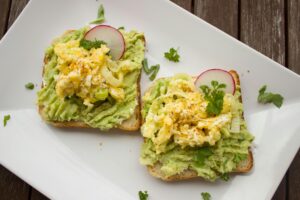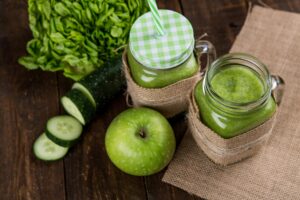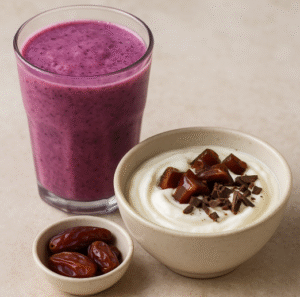Revolutionize Your Relationship with Sugar: Strategies to Conquer Cravings and Rewire Your Mind
Struggling with sugar cravings—that intense and often overwhelming desire for something sweet—is a challenge faced by countless individuals. If you frequently find yourself reaching for a biscuit, chocolate, or any sugary snack only to experience hunger pangs shortly afterward, know that you are far from alone in this endeavor. Gaining insight into the nature of these cravings is essential for effectively overcoming them and achieving a healthier lifestyle.
It’s easy to feel guilty about a perceived lack of willpower, but let's clarify: this is not your fault. Our bodies have evolved to crave sweetness because, for much of human history, it signified a reliable source of energy and safety. This natural inclination was advantageous during times of food scarcity, aiding our ancestors in survival. However, in today's modern landscape, where processed foods and hidden sugars abound, our innate drive for sugar has been exploited, leading to persistent cravings that often feel impossible to break.
 Present-day diets typically feature low fiber content and a high prevalence of ultra-processed foods, which tend to lack vital nutrients. This unhealthy combination traps many people in a relentless cycle of cravings, energy dips, and emotional eating, creating an ideal storm for those attempting to manage their sugar intake.
Present-day diets typically feature low fiber content and a high prevalence of ultra-processed foods, which tend to lack vital nutrients. This unhealthy combination traps many people in a relentless cycle of cravings, energy dips, and emotional eating, creating an ideal storm for those attempting to manage their sugar intake.
However, there is a silver lining: understanding the scientific foundations of these cravings is a critical first step toward liberation. By recognizing how sugar influences your brain chemistry, you can see that this struggle goes beyond mere willpower. Instead, it involves a complex interplay of biology, habitual patterns, and emotional triggers that can be transformed with mindful effort and dedication.
By making conscious dietary choices, supplying your body with the necessary nutrients it craves, and breaking the emotional ties to sugar, you can effectively rewire your brain's response to sweetness. This journey isn’t about strict limitations or feelings of deprivation; rather, it’s about nourishing your body with what it truly needs and creating healthier pathways in your brain that naturally reduce cravings over time.
This transformative process requires patience and commitment. However, armed with the right knowledge, tools, and support, you can reclaim control over your cravings, feel more attuned to your body's requirements, and savor food without guilt or obsession.
Achieving freedom from sugar cravings is not just a distant dream; it is a tangible reality that is within your reach. I am here to guide and support you every step of the way on this empowering journey toward a healthier relationship with food.
Diving Deep into the Causes of Sugar Cravings: Unpacking More Than Just a Sweet Tooth
It’s easy to assume that sugar cravings are simply a result of a fondness for sweet flavors. After all, who doesn’t enjoy a little indulgence now and then? However, the reality is much more complex, as your body grapples with various factors that contribute to these cravings.
Your taste buds certainly play a significant role in this experience, as the receptors on your tongue are specifically designed to detect sweetness and trigger pleasure signals in your brain. Yet, the gut-brain connection is the true powerhouse behind those intense sugar cravings. This intricate signaling system transmits powerful messages between your gut and brain, significantly influencing your desire for sweetness.
Exploring Gut-Brain Communication: Decoding the Unique Influence of Sugar on Your Body
 Here’s the fascinating process that occurs behind the scenes: certain neurons in your gut become activated when you consume sugar. These neurons are vital components of a gut-brain circuit that communicates directly with the brainstem via the vagus nerve, which serves as the primary communication channel between your gut and brain.
Here’s the fascinating process that occurs behind the scenes: certain neurons in your gut become activated when you consume sugar. These neurons are vital components of a gut-brain circuit that communicates directly with the brainstem via the vagus nerve, which serves as the primary communication channel between your gut and brain.
Interestingly, this pathway is responsive to actual sugar but does not react to artificial sweeteners. This distinction explains why products like diet sodas or sugar-free snacks often fail to satisfy cravings in the same way—they lack the profound biological feedback loop that real sugar provides, leaving you wanting more.
This gut-brain axis is precisely what makes sugar cravings so compelling. It’s not just about enjoying a delightful flavor; your brain interprets sugar as a source of reward, pleasure, and safety. These primal responses have historically helped humans survive during times of food scarcity.
How Modern Dietary Trends Fuel Sugar Cravings: Breaking the Destructive Cycle
However, contemporary dietary habits only worsen this dilemma. Consuming simple carbohydrates like white bread and sugary snacks keeps your body in a perpetual state of “sugar-burning mode.” This occurs when your meals lack sufficient protein, fiber, and healthy fats. Without making dietary changes, escaping this cycle becomes increasingly challenging.
This condition, known as metabolic inflexibility, causes your body to rely heavily on sugar for energy while struggling to access stored fat reserves. Consequently, you may face ongoing hunger, energy crashes, and those persistent cravings for quick sugar or carbohydrate fixes to maintain energy levels. Remember, this is not a personal shortcoming; it’s a biological trap that many find themselves ensnared in.
The Emotional Links to Sugar: Unveiling the Hidden Habitual Patterns
 Yet, it’s crucial to acknowledge that cravings extend beyond the physical plane. For numerous people, sugar becomes a source of emotional comfort. It is often used to relieve stress, elevate mood, or serve as a reward after a demanding day. Over time, these behaviors can become deeply entrenched. Thus, it’s not solely your body craving sugar; it’s your mind persuading you that you need it to feel better. This interplay of biological tendencies, fluctuations in blood sugar, and emotional habits creates a pattern that may seem insurmountable.
Yet, it’s crucial to acknowledge that cravings extend beyond the physical plane. For numerous people, sugar becomes a source of emotional comfort. It is often used to relieve stress, elevate mood, or serve as a reward after a demanding day. Over time, these behaviors can become deeply entrenched. Thus, it’s not solely your body craving sugar; it’s your mind persuading you that you need it to feel better. This interplay of biological tendencies, fluctuations in blood sugar, and emotional habits creates a pattern that may seem insurmountable.
Awareness: The Essential Key to Gaining Freedom from Cravings
Recognizing what is truly transpiring is the foundational step toward liberation. Once you understand that your cravings arise from a complex interplay of your brain, gut, metabolism, and emotions—rather than a mere desire for taste or a deficiency in willpower—you can begin to effect meaningful changes.
You are not flawed. Your body is functioning just as it has been conditioned to operate. However, you possess the power to retrain it, and this is where the journey of lasting transformation begins.
Harnessing the Power of Diet to Combat Sugar Cravings
The encouraging news is that your diet is one of your most powerful assets in the battle against sugar cravings. The emphasis should not solely be on eliminating sugar; it’s about integrating the right foods and habits that support your body and brain’s needs.
By making informed food choices, you can stabilize your blood sugar, maintain consistent energy levels, and train your body to depend less on rapid sugar fixes. Here are some of the most effective strategies to consider:
Incorporate Nature’s Sweetness: Fruits as a Healthy Alternative
When sugar cravings strike, opting for fruit can be a transformative choice. Instead of reaching for processed, high-calorie snacks, select nature’s candy: fruits. They are naturally sweet yet loaded with fiber, vitamins, and water, making them far more satisfying than biscuits or chocolate bars.
 Berries stand out as an excellent choice due to their lower sugar content in comparison to other fruits, paired with their high fiber content. This combination slows digestion and keeps you feeling full longer. Consider strawberries, raspberries, and blueberries to satisfy your sweet cravings without causing significant blood sugar spikes. If your cravings are particularly strong, sweeter fruits like mangoes, grapes, or pineapples can be satisfying. Pairing fruits with natural yogurt or nuts can further enhance satisfaction, as healthy proteins and fats will prolong feelings of fullness.
Berries stand out as an excellent choice due to their lower sugar content in comparison to other fruits, paired with their high fiber content. This combination slows digestion and keeps you feeling full longer. Consider strawberries, raspberries, and blueberries to satisfy your sweet cravings without causing significant blood sugar spikes. If your cravings are particularly strong, sweeter fruits like mangoes, grapes, or pineapples can be satisfying. Pairing fruits with natural yogurt or nuts can further enhance satisfaction, as healthy proteins and fats will prolong feelings of fullness.
Additionally, dates and prunes provide fantastic alternatives when you’re seeking something sweet. They are rich in fiber and natural sugars, helping you feel satisfied without turning to processed sweets or chocolate. However, it's important to remember that dried fruits have higher sugar concentrations than fresh fruits. The drying process removes water, causing the fruit to shrink while the sugar content remains unchanged.
As a result, consuming several dried fruits, such as four prunes, is much easier than eating four fresh plums. The water content in fresh fruits helps fill you up more quickly, while dried fruits can lead to overeating. Therefore, when selecting dried fruits, be mindful of portion sizes. A small serving can effectively satisfy a sweet craving, but larger portions can quickly accumulate in sugar and calorie content.
Combining dried fruit with a protein or fat source, such as a handful of nuts, can slow the absorption of sugar and keep you feeling full for a longer duration. Alternatively, consider drinking a glass of water alongside your snack to further enhance feelings of fullness.
Prioritize Protein for Lasting Satiety and Energy
 Protein is a formidable ally when it comes to conquering cravings. Consuming protein-rich foods such as eggs, chicken, fish, lentils, or tofu will help you feel satiated for extended periods. This satiety is attributed to protein's ability to slow digestion and influence hunger hormones. It effectively reduces levels of ghrelin (the hormone responsible for hunger) while increasing hormones like PYY and GLP-1, which signal fullness to the brain.
Protein is a formidable ally when it comes to conquering cravings. Consuming protein-rich foods such as eggs, chicken, fish, lentils, or tofu will help you feel satiated for extended periods. This satiety is attributed to protein's ability to slow digestion and influence hunger hormones. It effectively reduces levels of ghrelin (the hormone responsible for hunger) while increasing hormones like PYY and GLP-1, which signal fullness to the brain.
Research indicates that enjoying a high-protein breakfast, such as eggs or Greek yogurt, can significantly reduce hunger and cravings throughout the day. This means fewer mid-morning or mid-afternoon urges for sugary snacks. Plant-based proteins like lentils, beans, and chickpeas also fulfill this role, providing a steady energy source without triggering the blood sugar rollercoaster associated with refined carbohydrates.
Enhance Your Fiber Intake for Improved Fullness
Fiber is your secret weapon against cravings. Foods rich in fiber help slow digestion, allowing you to feel satisfied for longer periods. Some excellent sources include whole grains, lentils, beans, chia seeds, and most vegetables.
Soluble fiber, found in chia seeds and oats, absorbs water and expands in your gut, creating a lasting feeling of fullness that can endure for hours. This means fewer hunger pangs and fewer temptations to snack on sugary foods. Whole grains and vegetables also add bulk to your meals, helping you feel satisfied without needing extra calories from sugar.
Choose Nutrient-Dense Foods to Naturally Satisfy Sweet Cravings
Occasionally, cravings arise not because you need sugar, but because your body requires more food. Including naturally sweet, nutrient-packed foods like sweet potatoes can make a significant difference. Sweet potatoes offer natural sweetness, fiber, and slow-release carbohydrates while also providing essential vitamins like A and C. Incorporating healthy carbohydrates such as sweet potatoes or butternut squash into your meals ensures you feel nourished and satisfied, thereby reducing the urge to reach for sugary snacks later on.
Opt for Satisfying Snacks for a Healthier Choice
 When those cravings hit, having smart snack options readily available can truly save the day. Greek yogurt, in particular, stands out as an excellent choice. It is high in protein, rich in calcium, and beneficial for gut health—especially when it contains live cultures. Opt for plain yogurt without added sugars and enhance its flavor with berries or a drizzle of honey for a touch of sweetness.
When those cravings hit, having smart snack options readily available can truly save the day. Greek yogurt, in particular, stands out as an excellent choice. It is high in protein, rich in calcium, and beneficial for gut health—especially when it contains live cultures. Opt for plain yogurt without added sugars and enhance its flavor with berries or a drizzle of honey for a touch of sweetness.
Trail mix also makes for a fantastic snack option. Combining dried fruit with nuts offers the best of both worlds: the natural sweetness from the fruit and the healthy fats, protein, and fiber from the nuts. Just remember to keep portions reasonable, as nuts are calorie-dense and a small handful is usually sufficient.
Transform Your Favorite Treats with Healthier Substitutions
You don’t need to eliminate everything you enjoy from your diet.
If you’re craving chocolate, consider switching to dark chocolate that contains 70% cocoa or more. It contains less sugar than milk or white chocolate and is also loaded with antioxidants that are beneficial for your heart and brain. Just remember, moderation is essential.
For lovers of fizzy drinks, consider opting for sugar-free sodas. Artificial sweeteners can provide a sweet taste without sugar, but be cautious, as they may not effectively reduce cravings in the long term. Some studies suggest that they might heighten the desire for sweetness, so use them sparingly rather than as a daily staple.
Chewing sugar-free gum or sucking on mints can also offer a sweet taste with minimal calories. These options serve as convenient tools for breaking the habit of reaching for sweets.
Support Your Gut Health: A Vital Component in Managing Cravings
Your gut and brain maintain a constant dialogue, and the condition of your gut health can substantially influence your cravings.
Fermented foods such as kimchi, sauerkraut, kefir, and kombucha are rich in beneficial bacteria that support your gut microbiome. A healthy gut can help regulate appetite, enhance digestion, and may even assist in reducing cravings for processed sugary foods.
By nourishing your gut with the right foods, you provide your brain with improved signals, which can subsequently help diminish intense sugar cravings.
Reap the Benefits of Smoothies as a Wholesome Snack Alternative
 Smoothies can serve as an excellent substitute for sugary snacks or sodas. By blending whole fruits with yogurt or milk, you achieve natural sweetness, fiber, and a wealth of nutrients.
Smoothies can serve as an excellent substitute for sugary snacks or sodas. By blending whole fruits with yogurt or milk, you achieve natural sweetness, fiber, and a wealth of nutrients.
The key is to opt for whole fruits instead of juices. Whole fruits retain their fiber content, which helps slow down sugar absorption and promotes a feeling of fullness. Including protein sources such as Greek yogurt or protein powder enhances the snack's satisfaction. Adding healthy fats like nut butter or chia seeds can also help balance the nutritional profile, ultimately stabilizing your energy levels and keeping you full for an extended period.
Evaluate Your Eating Patterns for Enhanced Control Over Cravings
While it’s essential to concentrate on what you eat, the timing and manner of your eating are equally important, particularly when managing sugar cravings.
Your eating habits significantly influence your energy levels, mood, and hunger signals throughout the day. Prolonged periods without food can lead to drops in blood sugar levels. When this occurs, hunger hormones surge, and your brain enters survival mode, triggering a search for quick fixes like sugary or fatty foods.
Therefore, establishing a routine that supports steady energy levels and curbs cravings is crucial.
Adopt Regular Eating Habits to Effectively Manage Sugar Cravings
One straightforward yet effective strategy is to consume meals at consistent intervals. Aim to eat every 3 to 5 hours to maintain stable energy levels. When you wait too long between meals, your blood sugar levels can plummet. This can leave you feeling irritable and fatigued, making you more likely to reach for quick, sugary foods. While these choices may provide a temporary energy boost, they often result in a crash later on.
Eating regularly aids in stabilizing blood sugar levels, controlling hunger hormones like ghrelin, and reducing the likelihood of impulsive emotional eating. Ensure each meal or snack includes protein and fiber-rich foods, as these will help you feel full for an extended period and provide a consistent energy source. Think of foods like eggs, chicken, lentils, Greek yogurt, or nuts paired with vegetables, whole grains, or fruit.
If large meals aren’t your preference, that’s perfectly fine. You can also opt for smaller, more frequent portions throughout the day. For instance, a routine of three main meals and two planned snacks can work effectively. The key is to plan ahead to avoid finding yourself in situations where you feel starving and resort to whatever food is available.
Combining Foods for Balanced Snacking
When indulging in treats, you can make them work for you rather than against you. Pairing sweet treats with healthier foods can help stabilize blood sugar levels. This approach keeps you satisfied for longer and minimizes cravings.
For instance, try dipping banana slices into melted dark chocolate when craving chocolate. Bananas provide natural sweetness and fiber, while dark chocolate offers a satisfying treat with less sugar and additional antioxidants.
Alternatively, mix a small handful of almonds with a few chocolate chips. The almonds deliver protein, healthy fats, and fiber, effectively slowing the sugar absorption from the chocolate. This way, you can indulge in a sweet snack while avoiding a significant blood sugar spike and crash.
This strategy is not about deceiving yourself; it’s about making your cravings work in your favor. By combining sweet treats with nutrient-dense foods, you provide your body with what it needs to maintain balance while still enjoying a bit of indulgence.
 You can also experiment with other creative combinations:
You can also experiment with other creative combinations:
- Apple slices paired with nut butter and a drizzle of honey
- Greek yogurt topped with chopped dates or dark chocolate shavings
- Frozen berries blended with a splash of milk and a teaspoon of cocoa powder
These combinations help satisfy your sweet tooth in a more balanced and nourishing manner. Over time, this approach can also help retrain your taste buds, diminishing the intensity of your sugar cravings.
Front-Load Your Caloric Intake for Effective Energy Management
Many individuals inadvertently consume the majority of their calories later in the day, often leading to late-night snacking and heightened sugar cravings.
Consider adjusting your eating pattern to include more calories and nutrients earlier in the day. A solid, balanced breakfast and substantial lunch can help stabilize blood sugar levels, reducing cravings later. This approach supports natural circadian rhythms and can enhance energy, mood, and appetite regulation.
Distributing Protein Throughout Your Meals to Combat Cravings
It’s not just about the total amount of protein you consume daily; it’s also essential to spread it across your meals. Make sure to incorporate protein sources like eggs, yogurt, lentils, fish, or chicken into every meal and snack. Protein helps regulate blood sugar, keeps you feeling full for longer, and diminishes cravings.
Finish Eating 2–3 Hours Before Sleep for Optimal Health
Eating too close to bedtime can disrupt sleep patterns and digestion, leading to feelings of grogginess and increased sugar cravings the following morning.
Allowing a window of 2–3 hours after your last meal before bedtime facilitates a gentle fasting period. This practice can improve sleep quality, support gut health, and reduce the likelihood of late-night snacking.
Craft Balanced Meals Using the 3-Macro Plate Approach
Aim to incorporate protein, fiber-rich carbohydrates, and healthy fats into each meal. This combination slows digestion, stabilizes blood sugar levels, and minimizes cravings.
For example:
- Grilled chicken (protein) + quinoa (fiber-rich carb) + avocado (healthy fat)
- Lentil soup (protein & fiber) + whole grain bread (carb) + drizzle of olive oil (fat)
Avoid Grazing and Mindless Snacking for Better Control
While small, planned snacks can help manage hunger effectively, constant grazing on refined carbohydrates or sugary snacks can result in blood sugar spikes. These spikes lead to fatigue, irritability, and a craving for more sugar. It’s all too easy to eat out of habit or boredom.
Instead, focus on eating mindfully during designated times. Choose balanced meals and snacks, which provide your body with ample time to digest and reset. This practice stabilizes blood sugar levels and retrains your natural hunger and fullness cues.
 Stay Hydrated to Effectively Curb Cravings
Stay Hydrated to Effectively Curb Cravings
Many individuals confuse thirst with hunger, which can lead to unnecessary snacking and sugar cravings. Before reaching for a snack, take a moment to assess whether you are truly thirsty. Consider drinking a glass of water or herbal tea.
Proper hydration supports your body’s natural signals, helping to reduce cravings and preventing you from turning to sugar as a quick solution. Staying hydrated is a simple yet effective habit for managing sugar cravings.
Pause and Reflect Before Eating: Cultivating Mindful Eating Habits
Incorporating a brief pause, even just 30 seconds, before eating allows you to check in with your body. Are you genuinely hungry? Or are you eating due to boredom, stress, or habit? This small practice fosters awareness and empowers you to make more intentional choices.
Your eating patterns should not feel restrictive, but rather focus on consistency and balance. By eating regularly and selecting the right foods, you can significantly decrease the frequency of sugar cravings, making it less likely to become trapped in the craving cycle.
Rewiring Your Response to Sugar: A Sustainable Long-Term Strategy
Consistently applying these dietary strategies can help rewire your body and brain's responses to sugar. Regularly consuming meals rich in protein and fiber enhances your body’s metabolic flexibility, allowing it to access fat stores for energy instead of relying solely on quick sugar boosts. Choosing naturally sweet, nutrient-dense foods satisfies cravings while also providing fiber and essential nutrients. This approach helps avoid the intense craving cycle often triggered by refined sugar. Additionally, supporting your gut health through diet may positively influence the signals between your gut and brain related to cravings.
Your Journey to Overcoming Sugar Cravings Begins Today
Breaking free from sugar cravings transcends mere willpower or the ability to say “no” more often. It involves working in harmony with your body rather than against it. Your biology, brain chemistry, and emotions all play significant roles in your response to sweetness.
Understanding that sugar cravings arise from gut-brain signals, imbalances in blood sugar, and learned behaviors alleviates the pressure. This struggle is not a reflection of a lack of willpower; it’s simply biology at play. It’s not a personal failing; it’s a natural response. This means you have the power to take actionable steps.
By making informed choices that give your body what it genuinely needs—such as increasing protein and fiber intake, eating regularly, and nourishing your gut—you can effectively manage cravings. Additionally, discovering balanced ways to satisfy your sweet tooth will contribute to this journey. Gradually, these small, consistent actions will begin to rewire your brain’s response to sweetness.
Remember, it’s not about achieving perfection; it’s about making progress. Each healthier choice you make strengthens new pathways in your brain, marking a step toward liberation from the grip of sugar. Change is a gradual process, and setbacks may occur along the way. However, by embracing these strategies, remaining curious, and being compassionate toward yourself, you can transform your relationship with food.
This is how you break the cycle for good. You’re not merely cutting down on sugar; you’re crafting a healthier, more balanced life where you feel empowered, energized, and free to enjoy sweetness in a way that supports your body rather than undermines it. This transformation is undoubtedly a change worth pursuing.
The Article: Break Free From Sugar Cravings appeared first on https://janestevensnutrition.com
The Article Overcoming Sugar Cravings for a Healthier You Was Found On https://limitsofstrategy.com



No responses yet